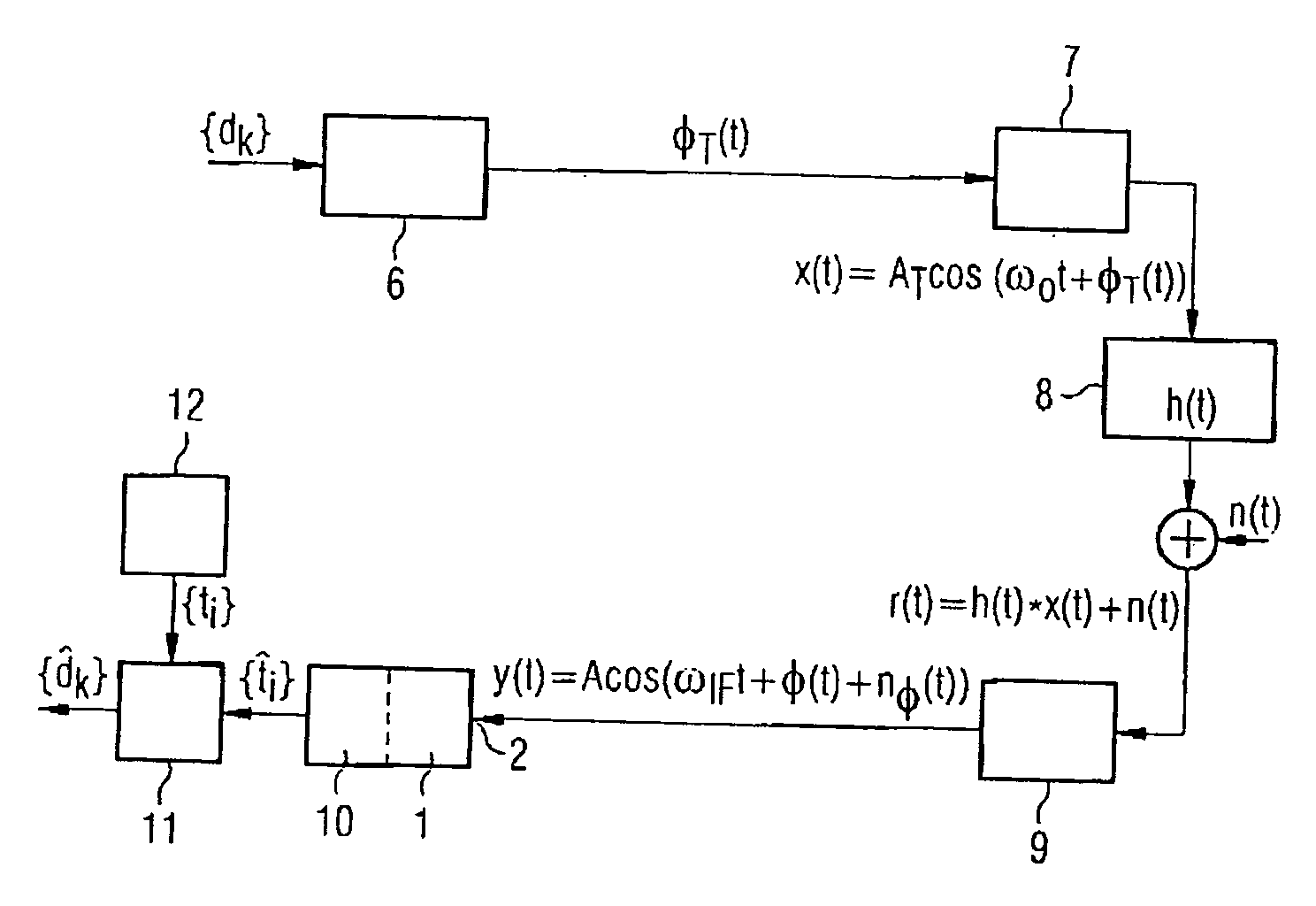Method and device for calculating zero-crossing reference sequences for signal detection of angle-modulated signals based on zero crossings of the received signal
a reference sequence and signal detection technology, applied in the direction of transmission, digital transmission, pulse technique, etc., can solve the problems of inability to develop an analog/digital converter, fluctuation in the number of zero crossings in the symbol interval,
- Summary
- Abstract
- Description
- Claims
- Application Information
AI Technical Summary
Benefits of technology
Problems solved by technology
Method used
Image
Examples
Embodiment Construction
[0025]FIG. 1 shows a detector 1 for zero crossings that is supplied with an analog angle-modulated signal 3, represented over time t, at an input 2. The analog angle-modulated signal 3 can be located, for example, in an intermediate-frequency range. The intermediate frequency should be higher than the symbol frequency so that a number of zero crossings of the intermediate frequency occur in each symbol period.
[0026] The detector 1 for zero crossings is a limiter-discriminator which outputs at its output 4 a two-valued signal 5, the zero crossings of which indicate the times t1, t2, . . . , t12, . . . of the analog input signal 3. Demodulation occurs on the basis of these zero crossing times t1, t2, . . . .
[0027]FIG. 2 shows a model of an angle-modulating transmission system. The data symbol sequence {dk} to be transmitted is supplied to a modulator 6 at the transmitter. In the modulator 6, a suitable modulation, for example CPFSK modulation, is performed. The phase function φT(t) ...
PUM
 Login to View More
Login to View More Abstract
Description
Claims
Application Information
 Login to View More
Login to View More - R&D
- Intellectual Property
- Life Sciences
- Materials
- Tech Scout
- Unparalleled Data Quality
- Higher Quality Content
- 60% Fewer Hallucinations
Browse by: Latest US Patents, China's latest patents, Technical Efficacy Thesaurus, Application Domain, Technology Topic, Popular Technical Reports.
© 2025 PatSnap. All rights reserved.Legal|Privacy policy|Modern Slavery Act Transparency Statement|Sitemap|About US| Contact US: help@patsnap.com



